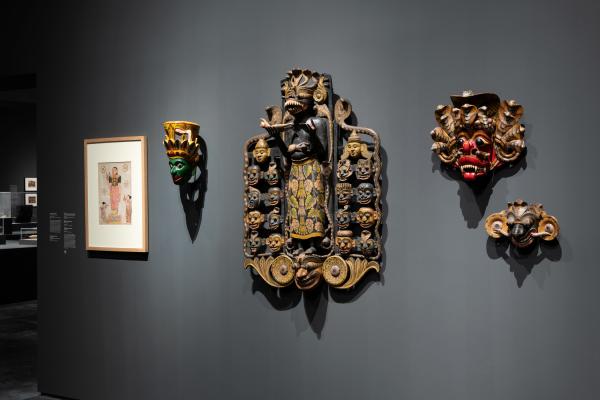Sri Lanka’s proximity to India ensured close cultural exchanges, resulting in many shared religious beliefs and observances. Primary among these was the worship and placation of demons (rakshasas), nature deities (yakshas), serpents (nagas), and other gods associated with primordial forces. In Sri Lanka, as in India, the spread of Buddhism entailed the assimilation of these deities into mainstream ideologies and practices. Many, however, still figure prominently in village observances, healing rituals, exorcisms, and performative traditions, many of which involve the use of wooden ritual masks. The Gara Raksha mask (right, bottom), for instance, served a protective function and would have been installed at the entrance to a new home to ward off evil forces. Most masks were worn in traditional folk dramas or in exorcistic ritual dances (tovil) intended to drive away diseases. Afflictions and ailments are presumed to be the work of particular demons, and the masks worn by dancers in the rituals are regarded as healing devices. The Maha Kola Sanni Yaksha mask (left) represents the chief of these demons and is kept to the side during a tovil ceremony.
Visit The Jeweled Isle: Art from Sri Lanka to view these masks among the 240 works in this first comprehensive survey of Sri Lankan art organized by an American museum. On view in the Resnick Pavilion through July 7, 2019.



